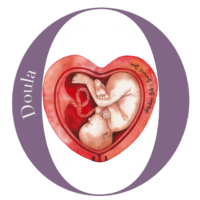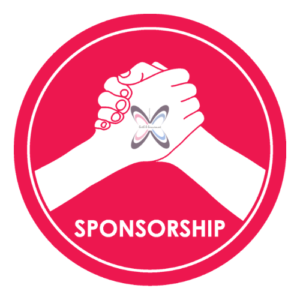.
.
More Information:
Please, visit our multiples birth planning page as well
which has valuable outside resources and additional birth education.
Finding ways of honoring your special motherhood:
- Many bereaved mothers consider a pregnancy subsequent to loss a “rainbow pregnancy” or “rainbow baby”, being that a rainbow “follows the storm” or the darkest days of loss. Because of this, mothers too, consider a surviving multiple to be a “rainbow baby” or “rainbow multiple”. If you’d like, you might view our rainbow birth plan to find ways of incorporating these ideas into your birth plan. In “vanishing twin” or “fetus papyraceus”, you might also consider including the placenta in a special farewell, including placenta burial or cremation; just visit our farewell celebrations page for more information.
The Birth Plan:
This plan is specific to twin Cesarean delivery, when one baby is stillborn and the other is expected to live. Please also print the NICU birth plan for more information.
These options vary, depending on the development of the stillborn baby. The options listed often refer to an older, more developed stillborn baby.
What to Pack:
__same sized clothes (at least one complete outfit)
__high sitting pants (not low cut), no zipper, no belt
__comfortable panties (high waist) may be more comfy than hospital issued panties
__open-bottomed shirts (no elastic around waist)
__scented spa eye sleep mask to cover your eyes in the bright operating room
__slip-on shoes
__Boppy or extra pillows
__ camera, since headphones are rarely permitted in OR, consider pre-recording a favorite worship song onto your camera to play during prep/before the birth: doula also brings a camera, and stillbirthday.com lists professional photographers at the “professionals/volunteers” page.
__Clinging Cross to bring with you to the O.R.
__*babies outfits (1 to take the live baby home, the other for visitation through to final farewell/burial)
__*additional special items: two teddy bears or blankets (one to leave with your stillborn baby, and one to take home), 2 molds, 1 for each of your baby’s hands or feet (or just one for your stillborn baby)
__two photos, one to leave with each of your babies
__you will need to bring a carseat
Have at home:
__antacids
__Dannon Activia yogurt (for healthy digestion)
__journal (to remember when to take medications on time)
__high-fiber meals and soups
__people ready to help!
__items listed in this post: natural honey, Goldbond no-talc
__maxi pads (for lochia, and incision)
__nursing pads
The Process (Prep):
- You are not able to eat a certain amount of hours prior (to reduce risk of pneumonia).
- The nurse may shave your bikini line (you can do this before labor begins).
- You are given an antacid (again, to reduce pneumonia).
- IV is set up.
- Catheter is set up (it is removed the morning after). *If baby goes to NICU, you will not be able to get up to see her until the catheter is removed, so you will not be able to see her until the next morning.
- Blood Pressure, Heart Rate Monitor, and pressure boots (on legs) are in place.
- Medicine is administered.
- Brought to the Operating Room (possibly before this point). A paper sheet “screen” will block your view of the surgery, and your hands may be tied down to prevent you from spontaneously touching the open area. *Remember to bring your camera, a picture of you and your husband, and a few baby swaddling blankets to O.R.
The Medicine:
There are three ways the medicine adequate for comfortable and safe surgery can be administered.
- Epidural: if you were already using this for labor, the nurse can add medicine appropriate for Cesarean to it.
- Spinal: most common for Cesarean.
- General: sometimes used for emergency Cesarean; no support will be allowed during birth.
- You can ask your anesthesiologist about an analgesic that may allow you to be more alert after the baby is born (Duramorph).
Sensations from Medicine:
- Instant, warm, tingly feeling in legs and chest (but some women report a “cold” sensation).
- Instantly, the feeling of hunger is gone (a good thing!).
- Warm feeling may change to cool if your blood pressure drops slightly.
- May seem like you can’t breathe. If you can talk, you’re breathing. Hold your hand over your mouth so you can feel your own breath.
The Process (Birth):
- Cut on skin (transverse “bikini cut” is most common)
- Separate 6 pack muscle
- Cut through peritoneum (a thin membrane)
- Move bladder down slightly
- Cut in uterus
- Deliver babies! Any sensations of pulling or tugging are of the actual birth.
- Umbilical cord(s) cut by doctor *Can be cut “long” so that dad may “trim” later.
- Placenta(s) released and removed.
- *Babies swaddled, both, or your live baby, may be given to dad. Dad: hold one or both babies close to mom’s face so she can see them, and ask the nurse to take pictures of baby(s), mom, and of you cutting (trimming) the cord(s). If you are familiar with human microbiota, you might ask for a small swabbing from your vagina to be swept over your living baby, for the potential microbial benefits to his immune system.
- The birth process can be completed in 5-15 minutes (the entire operation takes approx. 1 hour)
Especially regarding Bereavement
- *Keep an extra camera with mom, with easy access to view newborn photos while remaining in Operating Room (may encourage quicker physical recovery).
- *Have the photos you brought placed with your babies, as your live baby goes to NICU/nursery and the other photo to remain with your stillborn baby.
- *Ask if both babies can be swaddled in the blankets you brought for each of them.
- *Ask if your stillborn baby can remain with you in the OR, or when you will be reunited in a Recovery Room. Your live baby will be transferred to the NICU/nursery until you have been relocated to your Recovery room.
- *Ask if you can give both of your babies a bath in the recovery room.
- *Ask if your recovery room can be in a quiet location on the floor, where you have less of a chance of hearing other babies.
- *If your stillborn baby has hair, ask for scissors to cut a lock off.
Side Effects:
(common):
- Numbness (you will need to wait for the earliest signs of gaining sensations before moving to “recovery” room, which may be wiggling your toes or slightly lifting a leg—this can take 1-2 hrs)
- Soreness at medicine insertion site
- Ear ringing
- Shivering
- Anxiety
- Constipation
- Difficulty Urinating
- Headache
- Low Blood Pressure
- Nausea
(other side effects):
- Skin Reaction
- Itching
- Pain at medicine insertion site
- Burning
- Inflammation
- Difficulty Breathing
The Process (Suturing):
(“7 Layer Suture”):
- may heal faster
- Uterus stitched
- Bladder returned to place
- Peritoneum stitched (thin membrane around organs)
- Loosely stitch 6 pack
- Carefully stitch fascia (connective tissues of muscle fibers)
- Loosely stitch fat layer
- Skin sutures
(“3 Layer Suture”):
- Uterus stitched
- Bladder returned to place
- Fascia carefully stitched
- Skin sutured
After the Birth:
- Cesarean location (incision) will be covered in surgical tape.
- You will remain in O.R. until you gain earliest sensations (wiggle toes or slightly lift leg) (1-2 hrs)
Your Options (for Support People):
- You can have 1 person present with you during the birth (2 people is unlikely, but worth asking). That same person can stay with you in the Operating Room until you are moved to the “recovery”room on the maternity floor, where you will be reunited with your baby.
- The person present for the birth can leave the OR after the birth, to go to your “recovery room” and set up your things and prepare the room for you. This person (your husband), and/or your other support person (doula) will most likely not be able to enter the O.R. after the delivery to support you, so you will not be accompanied by a support person again until you are moved to the “recovery” room.
In Recovery Room/Postpartum Room:
- It’s called the same even for vaginal births. It’s actually called “LDR” for Labor Delivery Recovery. After a few hours, you may be moved (again!) to a Postpartum room.
- *Utilize all of the special plans you have, including saving mementos, holding your stillborn baby, capturing baby’s smell with a blanket you will take home with you, dressing your baby, naming your baby, taking photographs, and including a pastor and friends and family. See the “Professionals/Volunteers” link at stillbirthday.com for additional services to consider.
- Celebrate both babies together and separately.
- Have someone planning on spending the night with you. Perhaps consider having a friend spend the night with you, so that your husband can go home, prepare the house, and rest.
- You will still have lochia (the remaining blood from inside the uterus, which will be shed for the next 4-6 weeks).
- For comfort, try putting a maxi pad between your underwear and the birth location (incision). Ask your doctor about adding Gold Bond (no talc) powder to the pad to keep the area dry, or Manuka honey on the incision to aid in it staying sealed .
- Get propped up with extra pillows, use Boppy if it helps.
- You may be prompted to walk sometime between a few hours to 12 hours after the birth.
- Your catheter will be removed within the first 12 hours after the birth.
- Gentle, careful movement is best. Walk for a few minutes, every few hours of the day for the first few days. This can actually help with the abdominal discomfort. Walk for a few minutes every hour of day after that (with doctor approval).
- Get out of bed by first dangling your feet over, then move to a sitting position. Reverse this to get back into bed: sit on the bed first and slide into your pillow, holding the rail for support.
- You may not be able to eat until you pass gas. Walking carefully may help this.
- You might feel constipated, and may be given a stool softener.
- Respiratory therapy may continue for the first couple of days postpartum. Holding your hands or a pillow over your incision area can help support it while you take deep breaths.
- Narcotics are usually given for the first 12-24 hours after the delivery. Take them correctly.
- Pain medications are given after that. Take them correctly. Pain is easier to manage before it peaks–delaying medication can make it difficult to manage the pain.
- Ibuprofin lowers inflammation=better healing and comfort.
- *You will have breastmilk come in immediately after the birth.
- Have husband or a journal to remind you when to take medications.
- Rest. Healing happens when you sleep.
- It can take 1-2 whole months for complete healing. Don’t over-do it.
- *Mentally prepare for going home. The first few days at home can be very difficult.
- Watch for signs of postpartum depression (PPD) or secondary vaginitus.
- Remember to pray and ask others for help and for prayer.
Sensations (at birth location):
(worse in the first few days):
- Pulling
- Tugging
- Burning
- Aching
- Itching
- Red
- Puffy
- Uterus Cramping (even for vaginal births, as uterus is shrinking)
- Occasional Sharp Pain, in abdomen, chest, or shoulder area (may be from air entering abdomen during birth—a gas relief medicine may be recommended to get the air out)
Warning Signs:
- Bleeding at site
- Oozing at site
- Site opening up
- Smelling bad at site
- Persistent pain
- Fever
- Difficulty breathing
Help Yourself Heal:
(Massage):
· Find a massage therapist or physical therapist experienced with Cesarean recovery.
- Myofascial release techniques (gentle pressure applied above the affected area (feeling of tugging or bumpy)
- Cross Friction (Encourages proper formation of scar tissue)
(Other):
- Avoid stairs
- don’t waste walking (keep things close)
- Lift nothing heavier than a few pounds
- Do NOT drive
- No sex for 6 weeks (same as vaginal birth)
- Your doctor may recommend not TTC for at least 6 months
- Drink water frequently
- Nap often
- Limit visitors
- Move gently, and as recommended (a few minutes every few hours at first)
- Listen to your body. After the first week, you may be able to stretch your body out a bit more, with pelvic tilts, leg lifts and other gentle stretches.
- Ask friends providing meals to prepare soups for easy digestion, or meals high in fiber to help with your intestinal movements.
- Be easy on yourself, your body, and on your recovery.
- Talk to God, your husband, and trusted mentors and friends about all of your feelings.
- *Visit stillbirthday.com for “Farewell Celebrations” and for “Long Term Support” resources.
*are specific to stillbirth.













